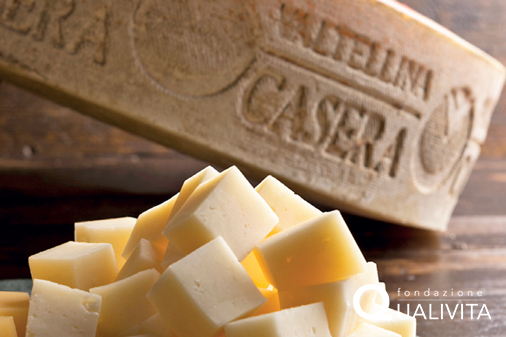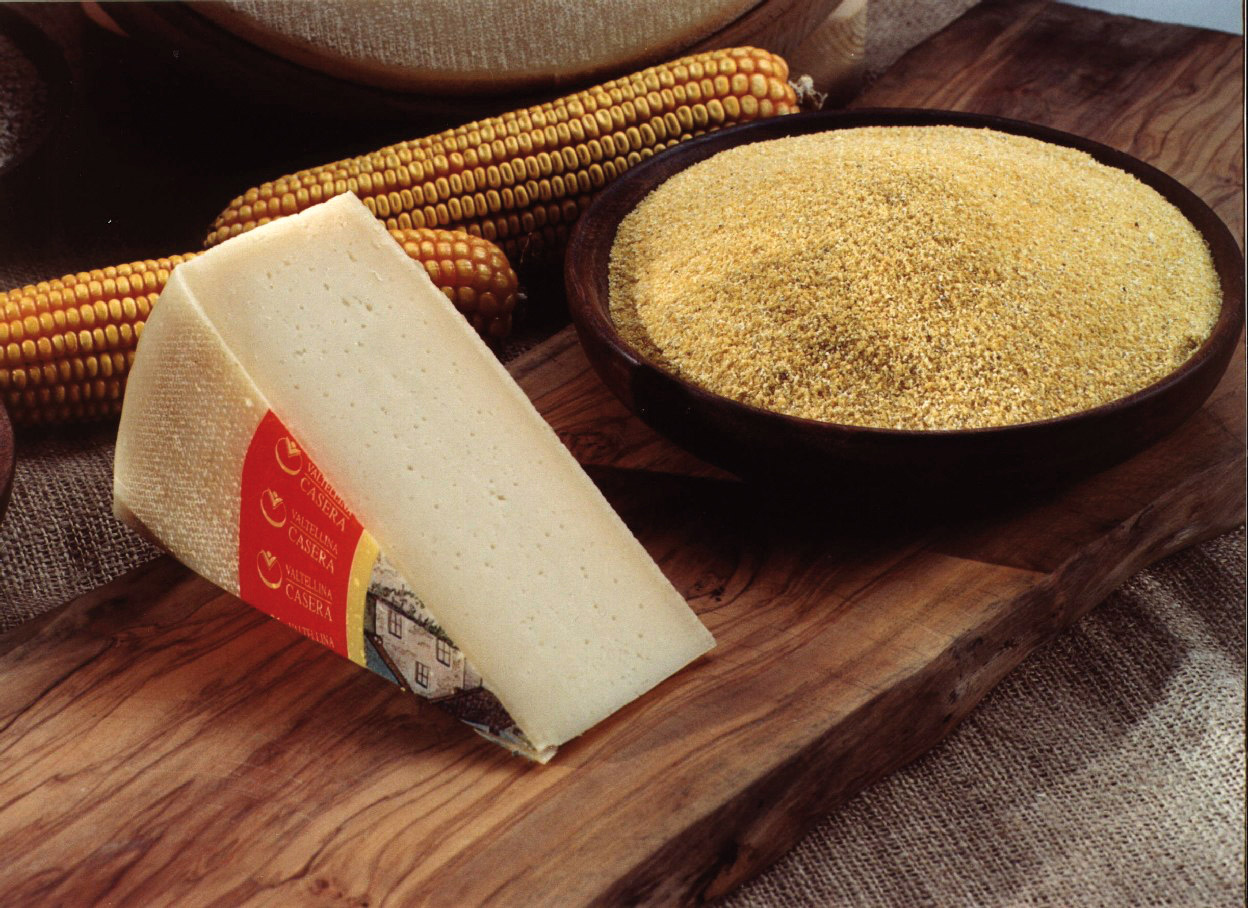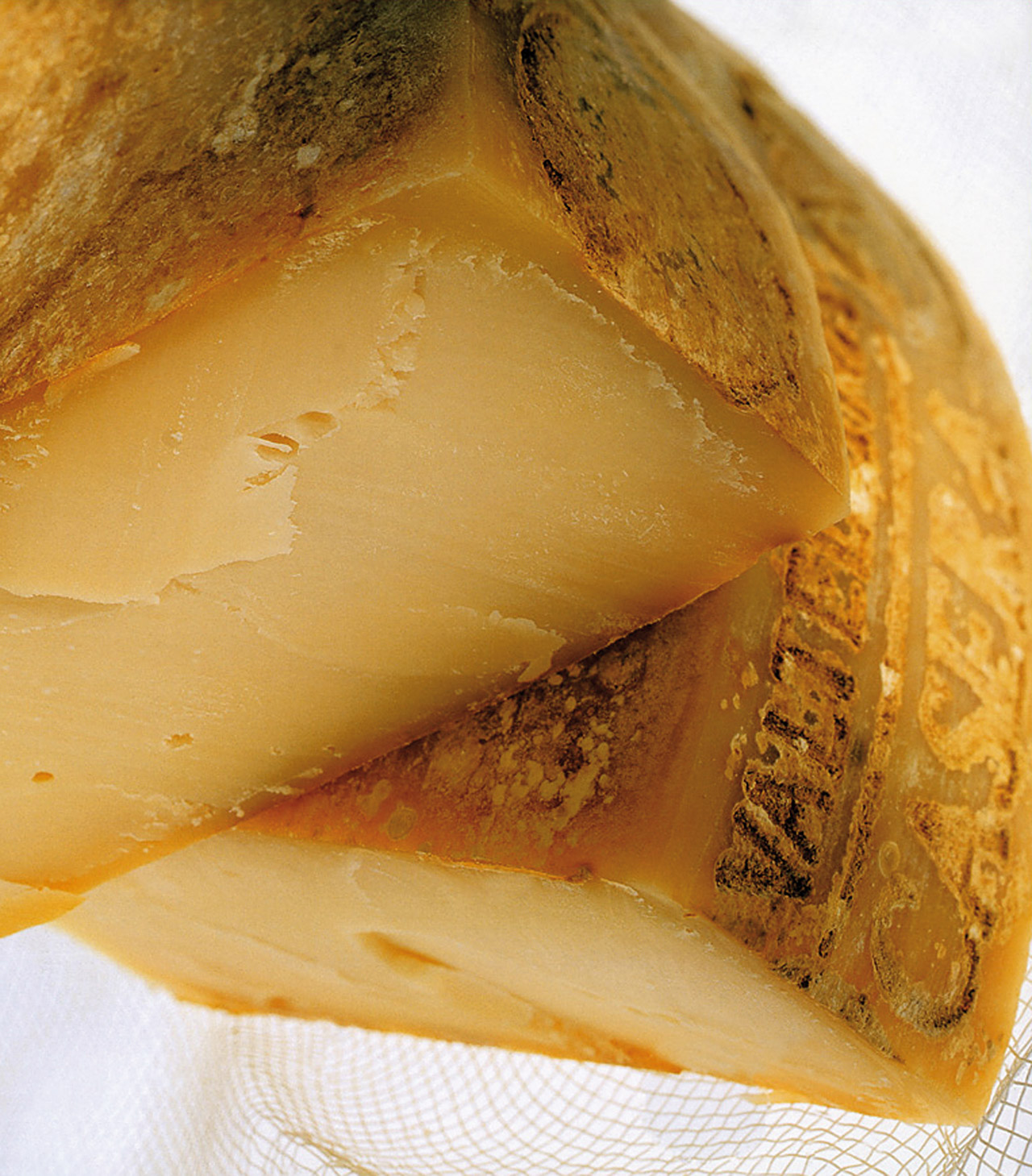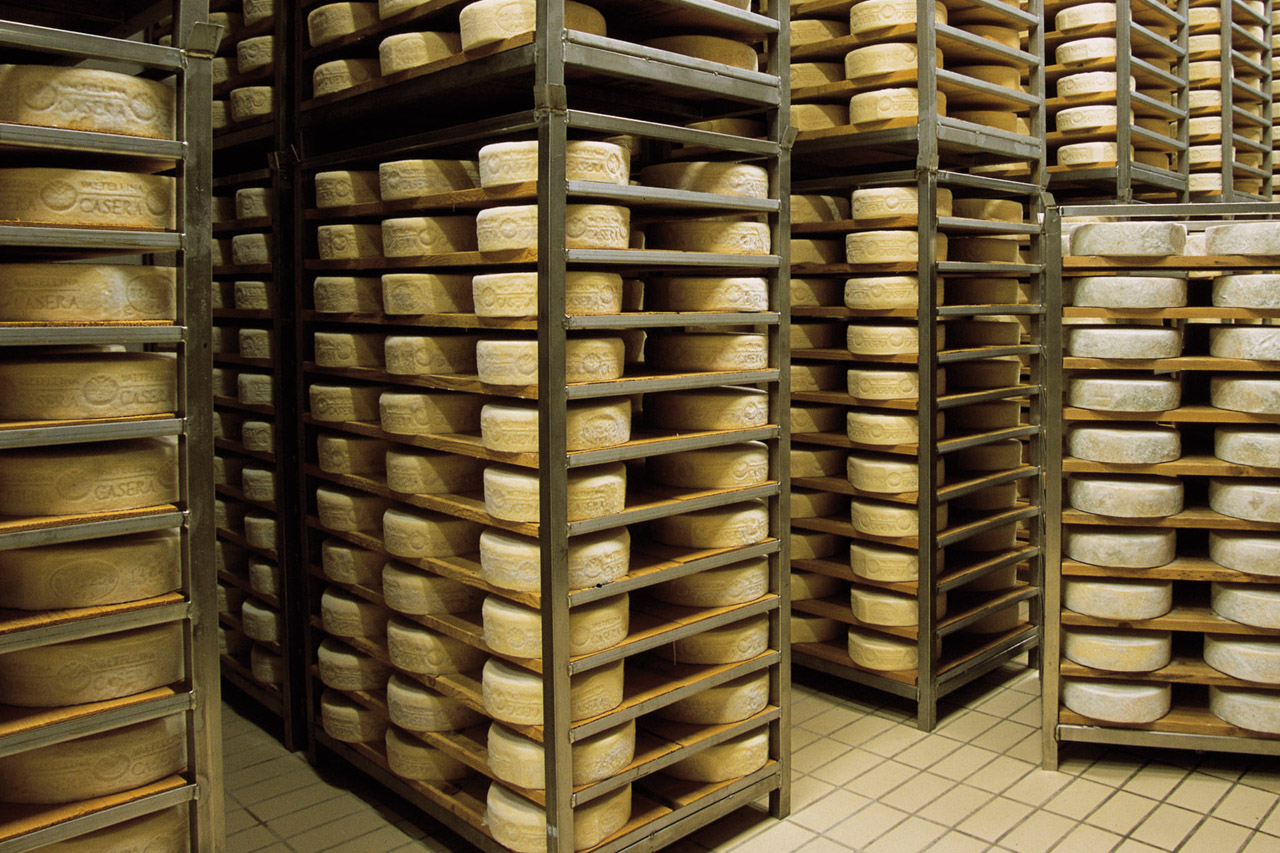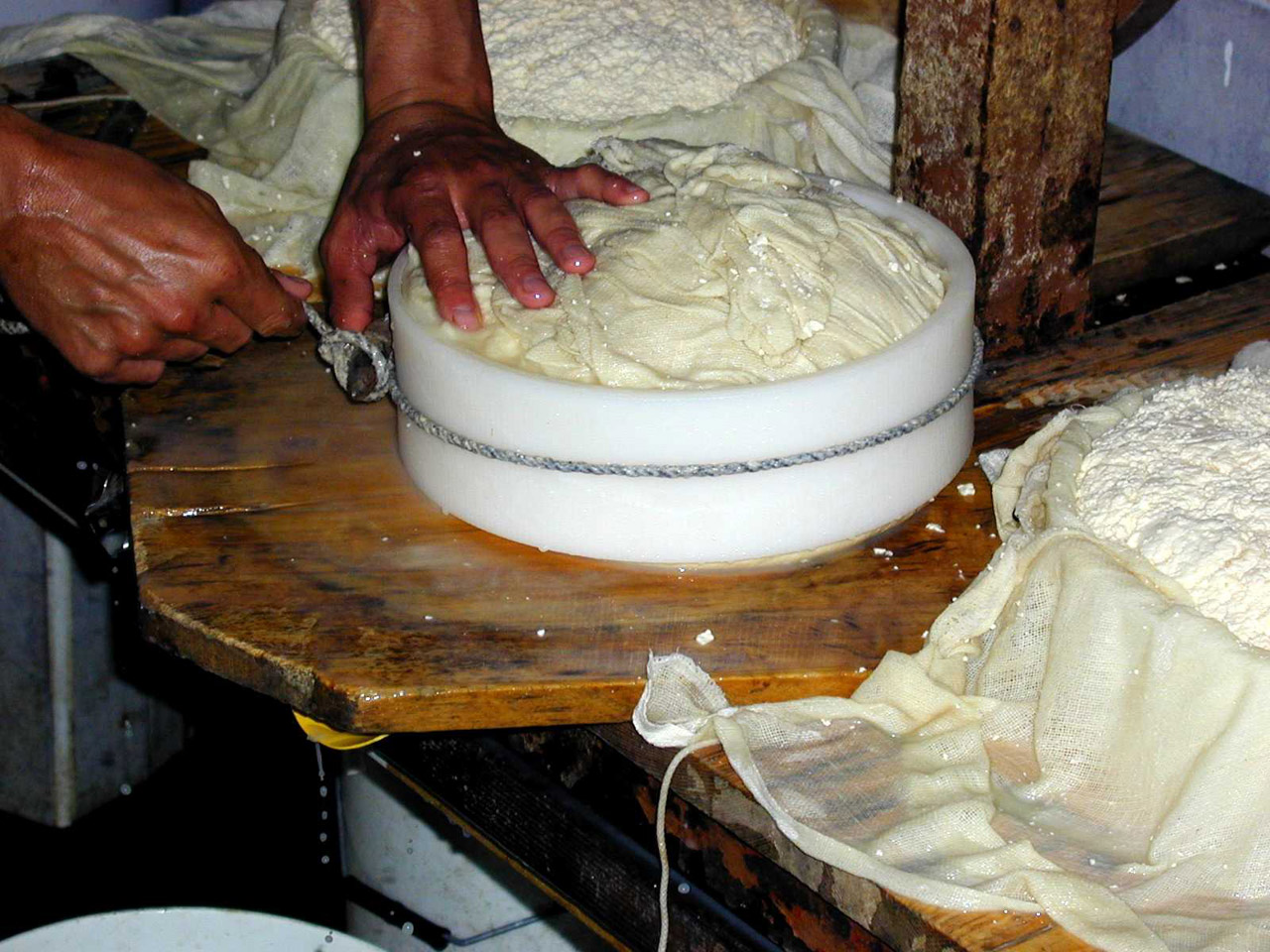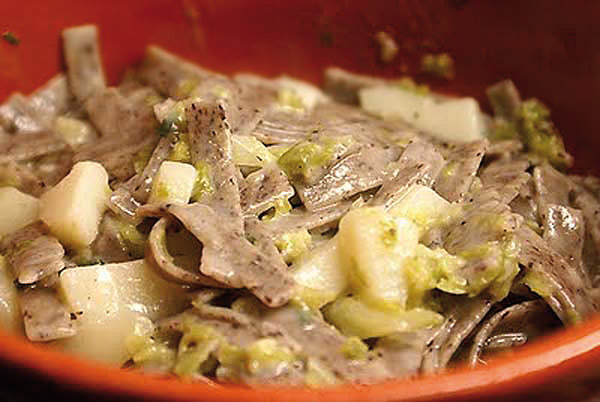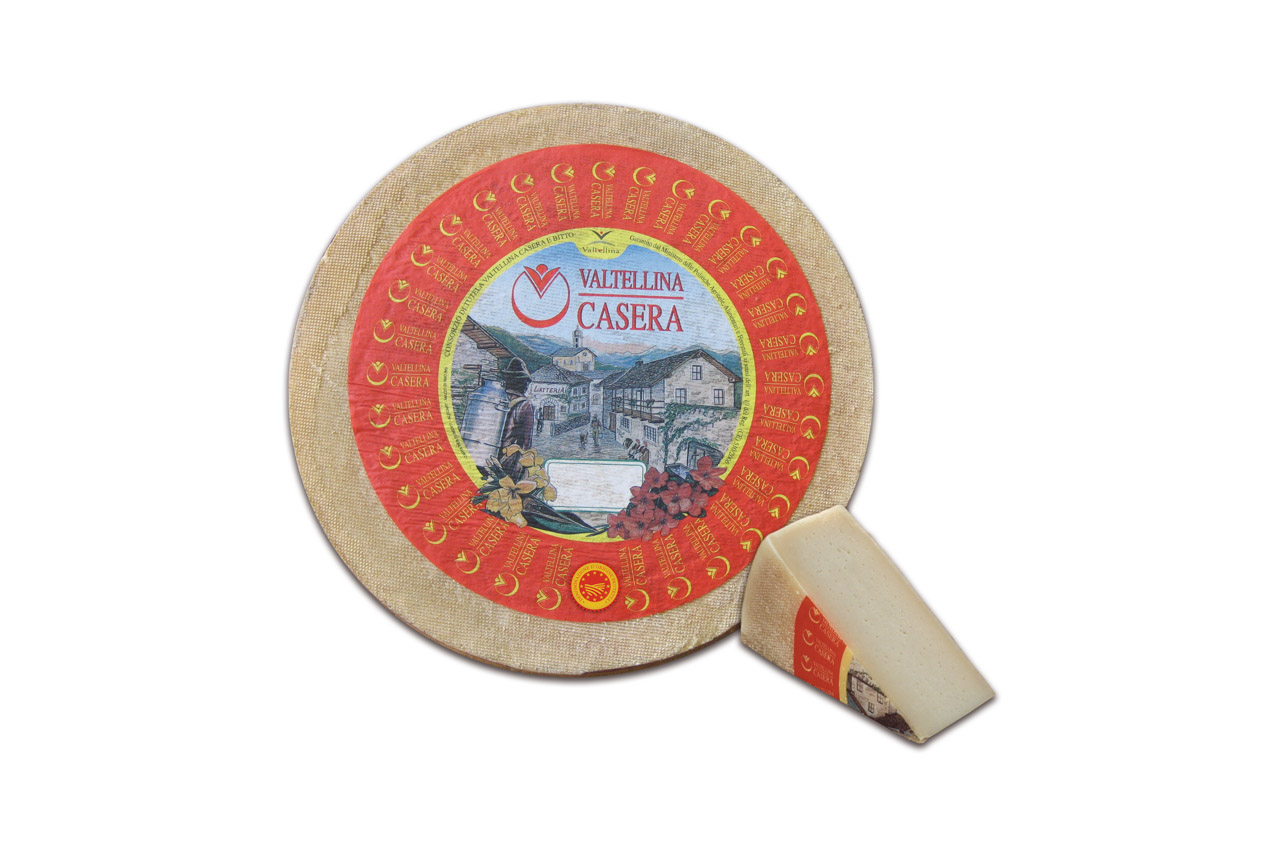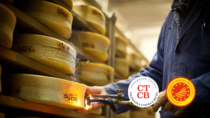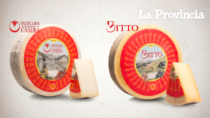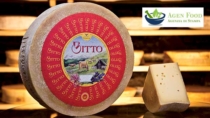Description
Valtellina Casera PDO is a cheese produced with semi-skimmed cow’s milk drawn from cows fed mainly on forage from the production area.
Production Area
The production area of Valtellina Casera PDO is within the territory of the Province of Sondrio, in the Lombardy region.
Production Method
The milk is obtained from two or more milkings and is partially skimmed before curdling, taking advantage of the spontaneous formation of dairy micro-flora. The curd, obtained through curdling the milk with calf rennet, is cooked at 40-45 °C for around 30 minutes; it is then broken until the grains are the size of corn kernels. The extracted mass is placed in traditional moulds bearing the mark of origin, and it is pressed for 8-12 hours. Ripening takes place in environments with a temperature of 6-13 °C and lasts for at least 70 days, after which the cheeses are checked and fire-branded.
Appearance and Flavour
Valtellina Casera PDO has a regular cylindrical shape, with flat surfaces and a diameter of 30-45 cm; the heel is straight, with a height of 8-10 cm, and it weighs between 7 and 12 kg, depending on the size. It is characterised by a firm rind with a straw-yellow colour that becomes more intense with aging. The cheese is springy and has a medium consistency, usually with tiny sparse eyes; it ranges from white to straw-yellow in colour. It has a sweet flavour and a distinctive aroma that becomes more intense with aging, bringing out fragrances of dried fruit and fresh grasses.
History
The origins of Valtellina Casera PDO date back to the 16th century, and are linked to the establishment of the first dairies throughout the Province of Sondrio. The dairies collected the milk during winter, when the animals were moved to stalls in the valley. In fact, casera cheese was only produced in winter, due to the fact that the summer milk was destined for the production of Bitto cheese in mountain areas. The milk was also semi-skimmed in order to produce butter, an extremely important element in the local cuisine. The etymology of the word casera derives from the Latin caseus, evidencing the influence that the Romans had on the art of cheese-making. The term also refers to the cellar or storeroom where the cheeses were left to ripen.
Gastronomy
Valtellina Casera PDO is best kept in a cool, dry place, and if put in the refrigerator it should be kept in the least cold compartment. This product is an excellent table cheese to be eaten on its own, but can also be used as an ingredient in many different dishes. The freshest cheese pairs well with buckwheat and typical Valtellinese dishes, such as pizzoccheri or polenta taragna, as well as summer salads and vegetable purée. The mature cheese is also used as a grating cheese. It pairs best with young, aromatic and fragrant red wines, like Rosso di Valtellina PDO.
Marketing
The product is marketed as Valtellina Casera PDO. It is sold year-round, whole wheels, in large pieces, or in pre-packed slices. Its heel must bear the dairy’s symbol, the date of production, the producer’s ID number and the product logo, all of which must be imprinted during shaping; the product logo is fire-branded at the end of the minimum ripening period.
Distinctive Features
The Valtellina Casera PDO designation has “united” this typical product made by cooperative dairies, dairies or single farms in the production area under just one name. In order to absorb moisture, a few lumps of sugar can be put inside the closed containers where Valtellina Casera PDO is kept.





